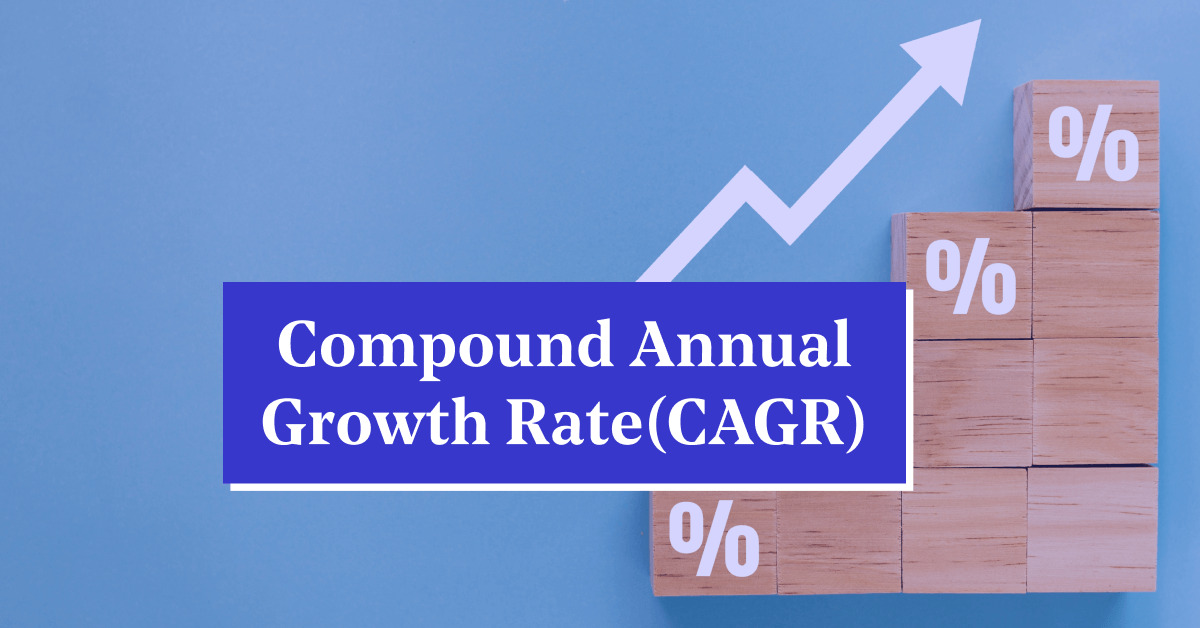The Compound Annual Growth Rate (CAGR) is a key metric that measures the average annual growth rate of an investment over a specified period, assuming a constant rate of growth. It provides a smoothed annual growth rate that reflects the investment’s growth trajectory, regardless of fluctuations in individual years.
What is CAGR?
CAGR represents the average yearly growth rate of an investment, calculated as if the investment had grown at a steady rate. For instance, if you invest ₹1,000 in a mutual fund with a CAGR of 10% over five years, this indicates that, on average, your investment grows by 10% per year. The actual growth might vary yearly, but CAGR offers a consistent growth rate for comparison.
CAGR Formula
The formula for calculating CAGR is:
Where:
- Ending Value: The final value of the investment.
- Beginning Value: The initial value of the investment.
- Number of Years: The total duration of the investment.
Expressing CAGR as a Percentage
To express CAGR as a percentage, multiply the result by 100.
How to Calculate CAGR
Step-by-Step Calculation
- Determine Values: Identify the starting value, ending value, and the number of years.
- Apply the Formula: Use the CAGR formula to compute the growth rate.
- Convert to Percentage: Multiply by 100 for percentage representation.
Example Calculation
If you invested ₹10,000 and it grew to ₹15,000 over 5 years:
- Starting Value: ₹10,000
- Ending Value: ₹15,000
- Number of Years: 5
Calculating CAGR:
Thus, the CAGR is approximately 8.45%, indicating an average annual growth of 8.45%.
Simple Annual Growth Rate (AGR)
The Simple Annual Growth Rate (AGR) is a straightforward measure representing the percentage change in value over one year, without considering compounding. The formula is:
Example of AGR Calculation
If you invest ₹10,000 and it grows to ₹12,000 in one year:
What is a Good CAGR?
A “good” CAGR can vary based on investment type and market conditions. Here are some guidelines:
- Stock Market: CAGR of 7% to 10% is generally considered good, matching long-term market averages.
- Bonds: A CAGR of 3% to 5% is typical for lower-risk investments.
- Inflation: A good CAGR should outpace inflation (around 2% to 3%).
- Risk and Return:
- High-Risk Investments: Aim for 15% or more.
- Low-Risk Investments: 2% to 5% is acceptable.
- Investment Horizon: Short-term investments might require higher CAGRs (10% or more), while long-term investments may be satisfactory at 7% to 10%.
Uses of CAGR
CAGR is versatile and can be applied in various contexts:
- Projecting Future Values: Use CAGR to estimate future investment values based on historical growth rates.
- Evaluating Investment Choices: Compare CAGR across different investments to identify stable returns.
- Sales and Earnings Growth: Assess the compound growth of sales and earnings in a business context.
- Defining Financial Goals: Set realistic financial targets by analyzing past CAGR performance.
- Industry Performance Analysis: Evaluate growth rates across industries to identify market trends.
Conclusion
The Compound Annual Growth Rate (CAGR) is an essential metric for assessing the growth of investments and business performance over time. By smoothing out short-term fluctuations, it provides a reliable measure of long-term growth, aiding in strategic decision-making and investment evaluation. Understanding CAGR equips investors and businesses with valuable insights for navigating their financial landscapes effectively.

Leave a Reply